Over the years, the local Nippon Steel Corporation Kamaishi Rugby Team produced many of Japan’s top national team players. Nicknamed the “Iron Men of the North,” the team’s fame reached an apex in the 1980s when they won the national championship a record-breaking seven years in a row.
Glamping & Good Times in Kamaishi
釜石市 / Kamaishi City
Town of Steel, Fish, & Rugby
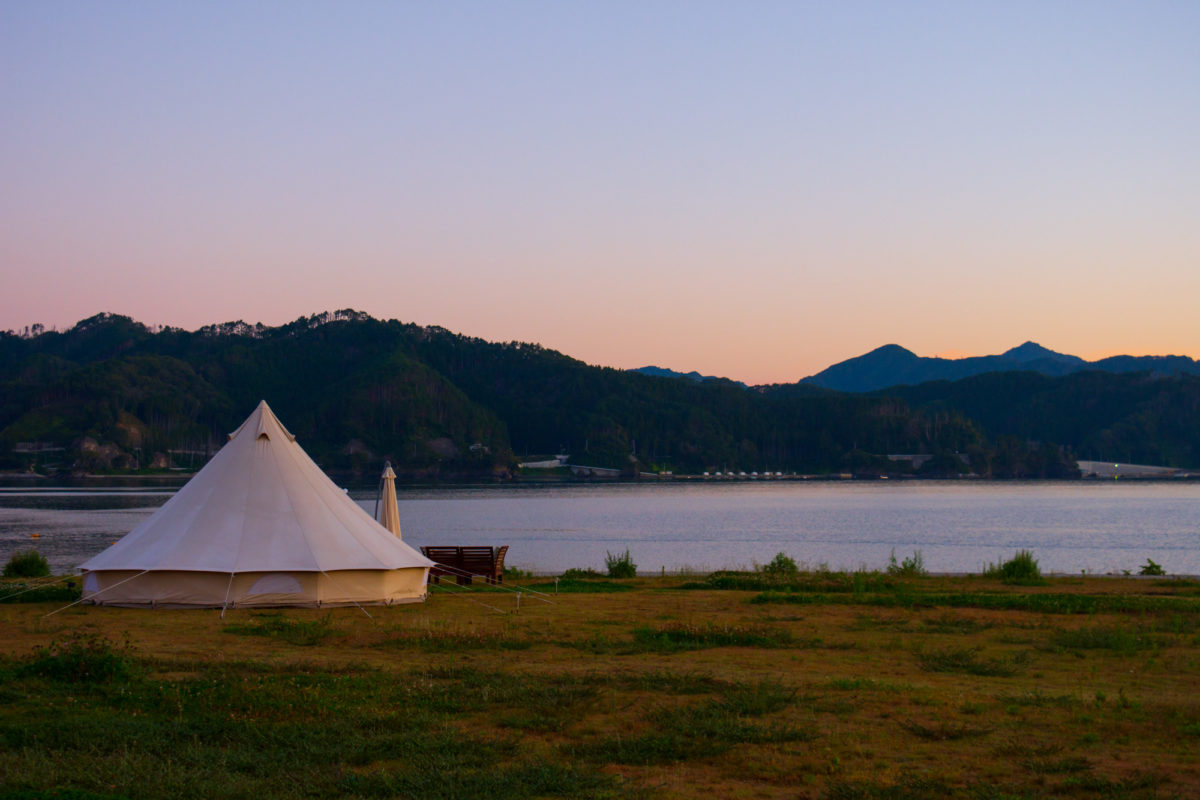
Photo by Wesley Keppel-Henry
Photo by Wesley Keppel-Henry
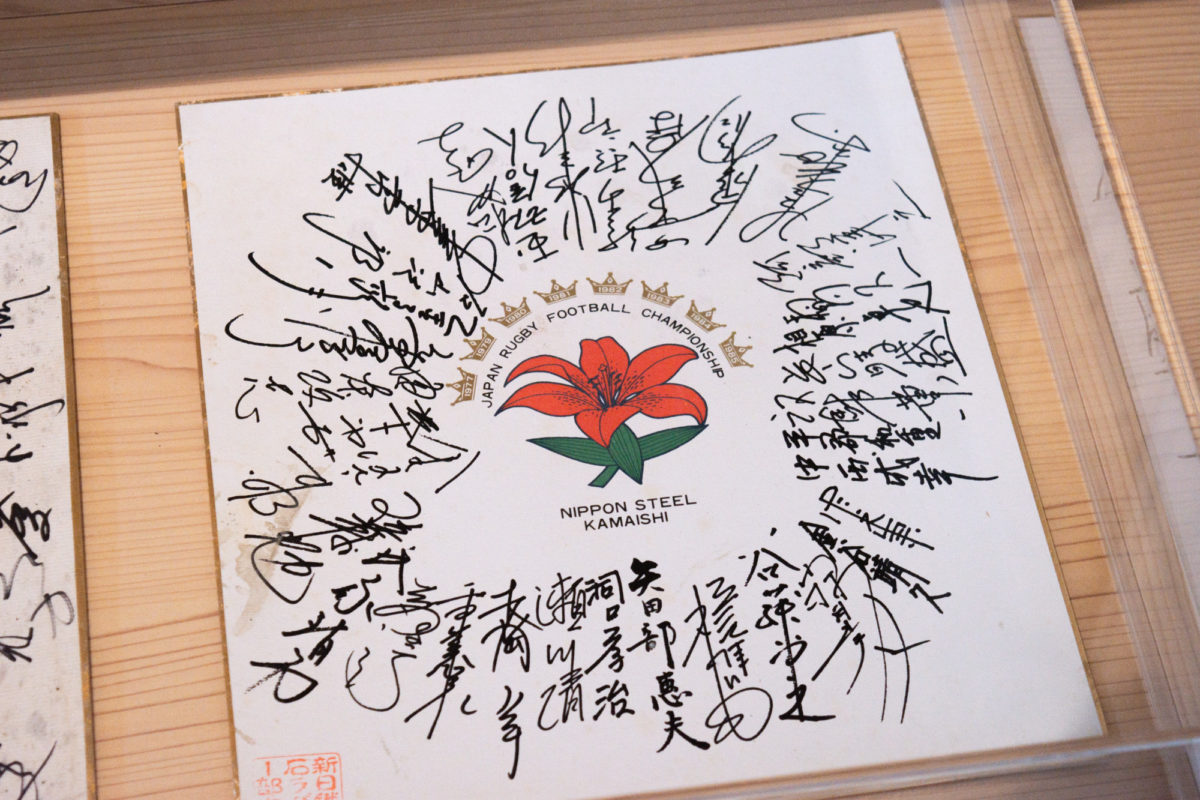
Photo by Wesley Keppel-Henry
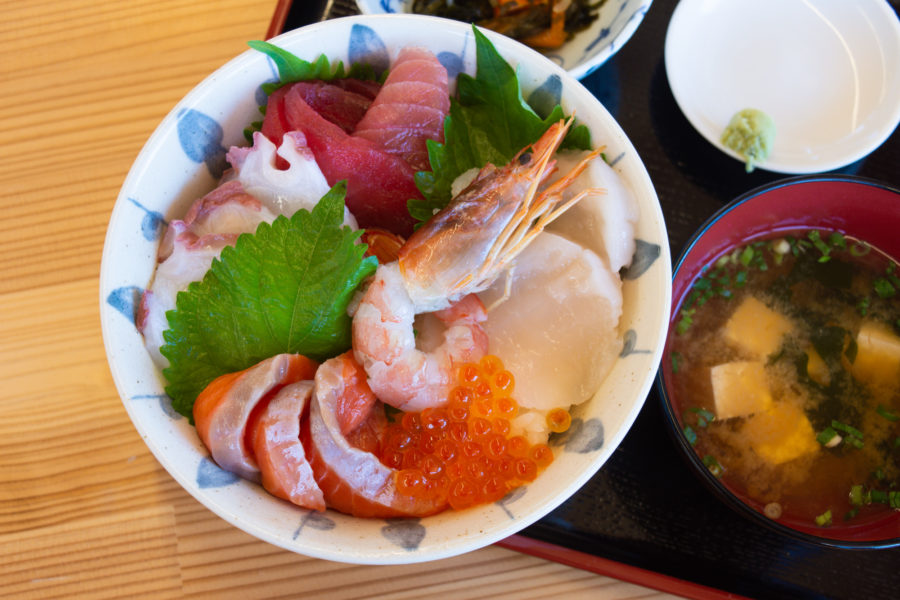
Photo by Wesley Keppel-Henry
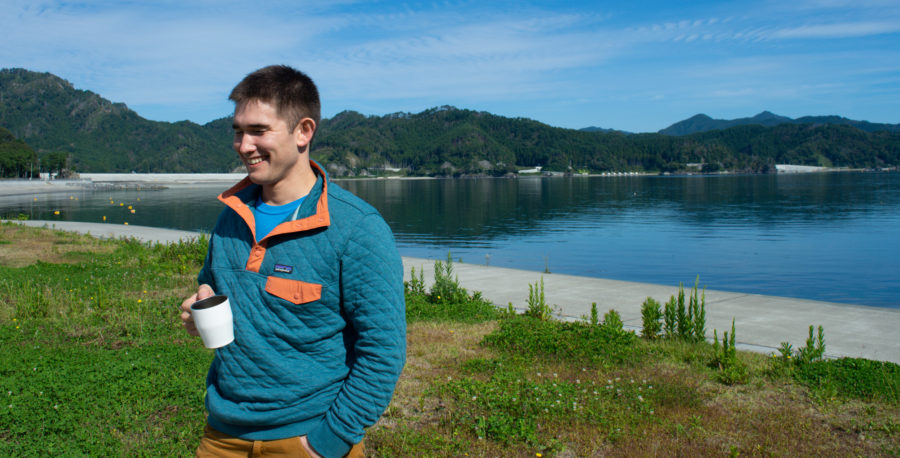
-
Of all the host cities for the Japan Rugby World Cup 2019, Kamaishi is the only one with rugby in its blood. A welcome sign, painted in huge letters on the side of the steel factory across the street, confronts visitors the moment they step out of the station. “鉄と魚とラグビーの街” (“Town of Steel, Fish, and Rugby”) it reads—the three things this small city is known for.
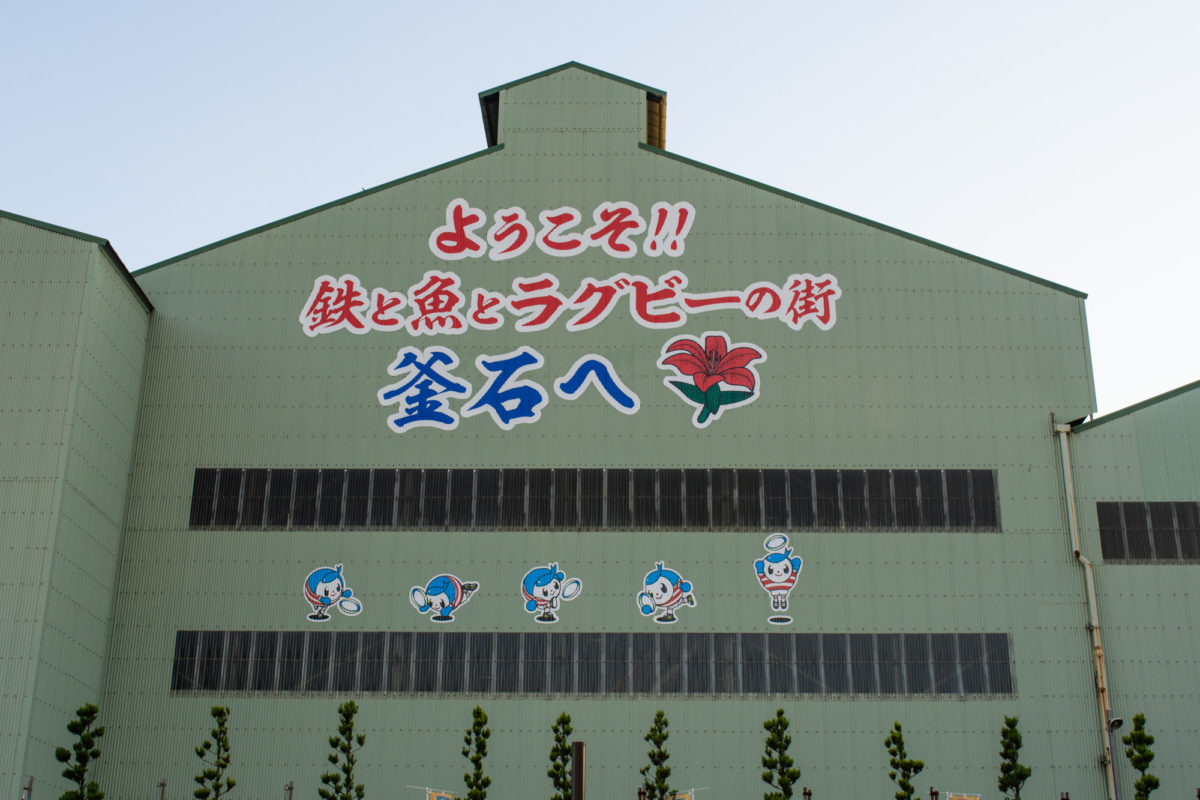
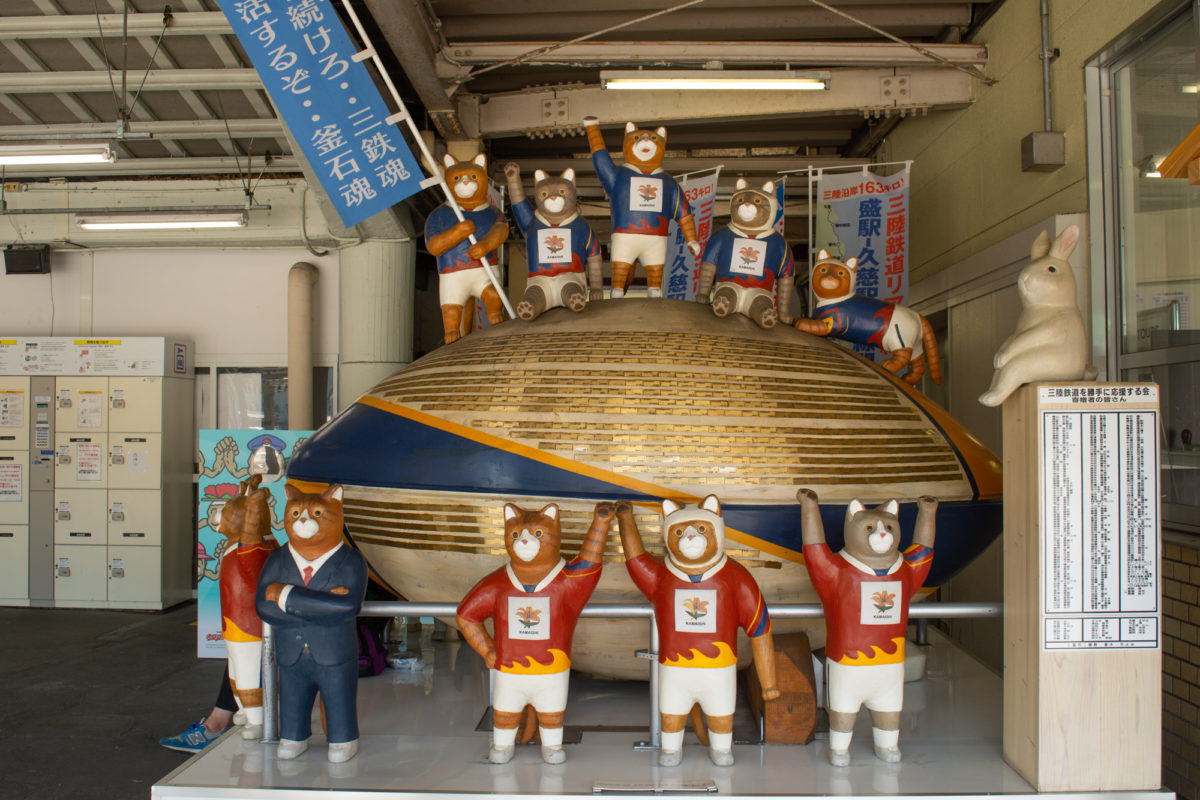
Of all the host cities for the Rugby World Cup, Kamaishi is also probably the least well-known overseas. I’d spent time in Kamaishi before, but never for sightseeing. So last week, Jay and I took a trip there to see what the town has to offer rugby fans and tourists.
Stadium Area
The Kamaishi Recovery Memorial Stadium is nestled against a forested hillside on the outskirts of town, on the coast near Unosumai Station. Unosumai was one of the areas devastated by the 2011 Great East Japan Earthquake and tsunami. The community has been working hard to revitalize the area, and to that end have turned the Unosumai Station area into a great place to spend an afternoon.
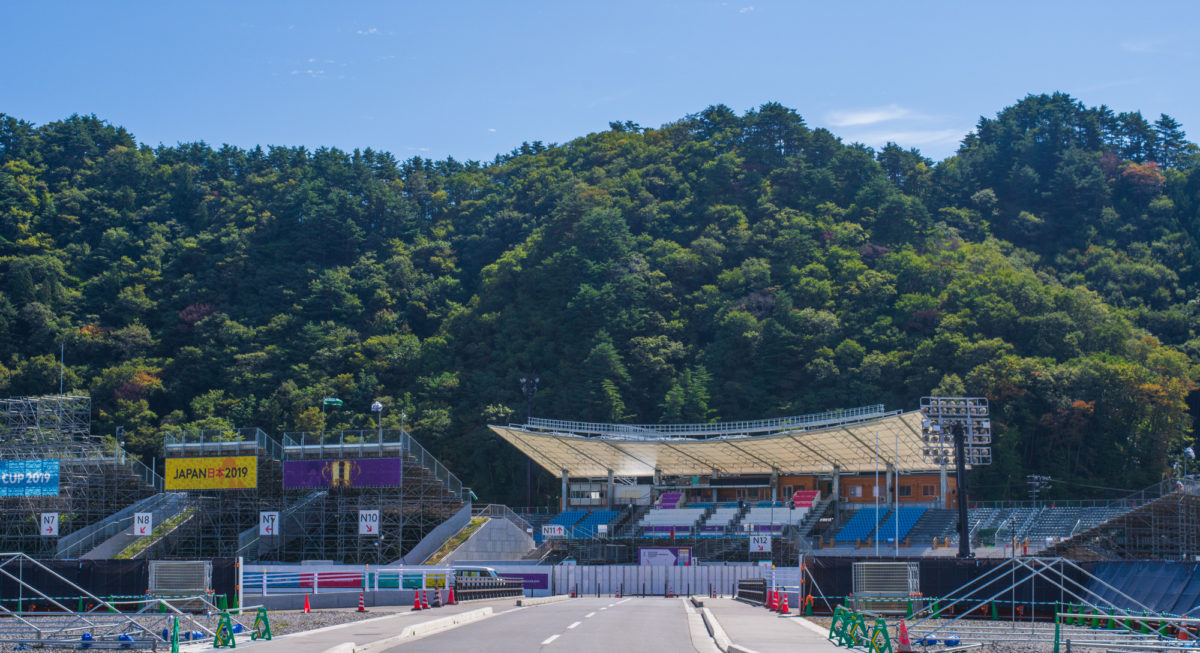
Across from Unosumai Station is the Tsunami Memorial Hall, a free English-friendly museum where you can learn about the tsunami and its effect on the area. Next to the museum stands the Kamaishi Memorial Park. It is one of the most touching memorials I’ve ever seen: two levels, two somber arcs of matte black steel. The upper one stands 11 meters high—the height of the tsunami when it struck this very spot. Below it lies the second arc, as if underwater. On it are inscribed the names of the tsunami victims.
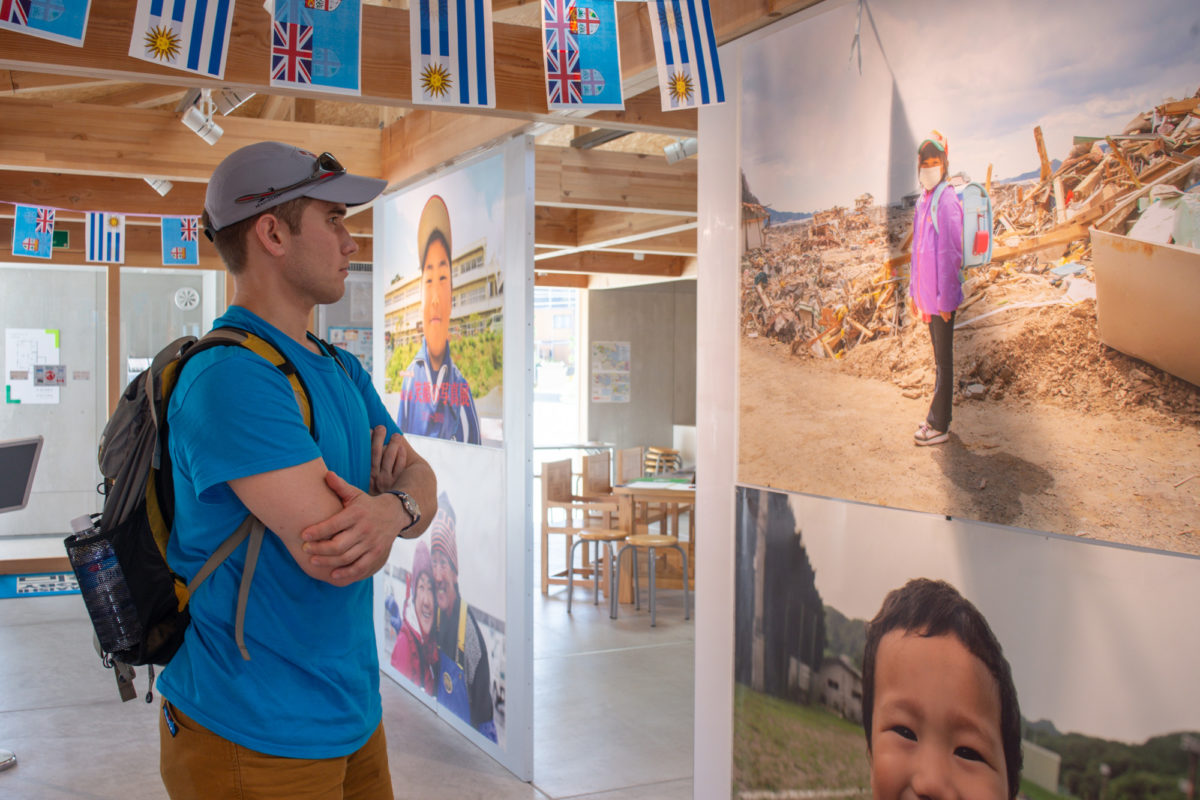
The sea brought tragedy to this region, but it also brings blessings. Next to the station is Shiori, a seafood restaurant and local-products market. It is the only one in town to be operated directly by the local fisheries cooperative, so the seafood here is top-notch and a good value. Jay really liked the kaisendon (seafood rice bowls), which came topped with crowd-pleasers like salmon and maguro (tuna), plus some of his personal favorites like fresh scallops and ikura (red caviar).
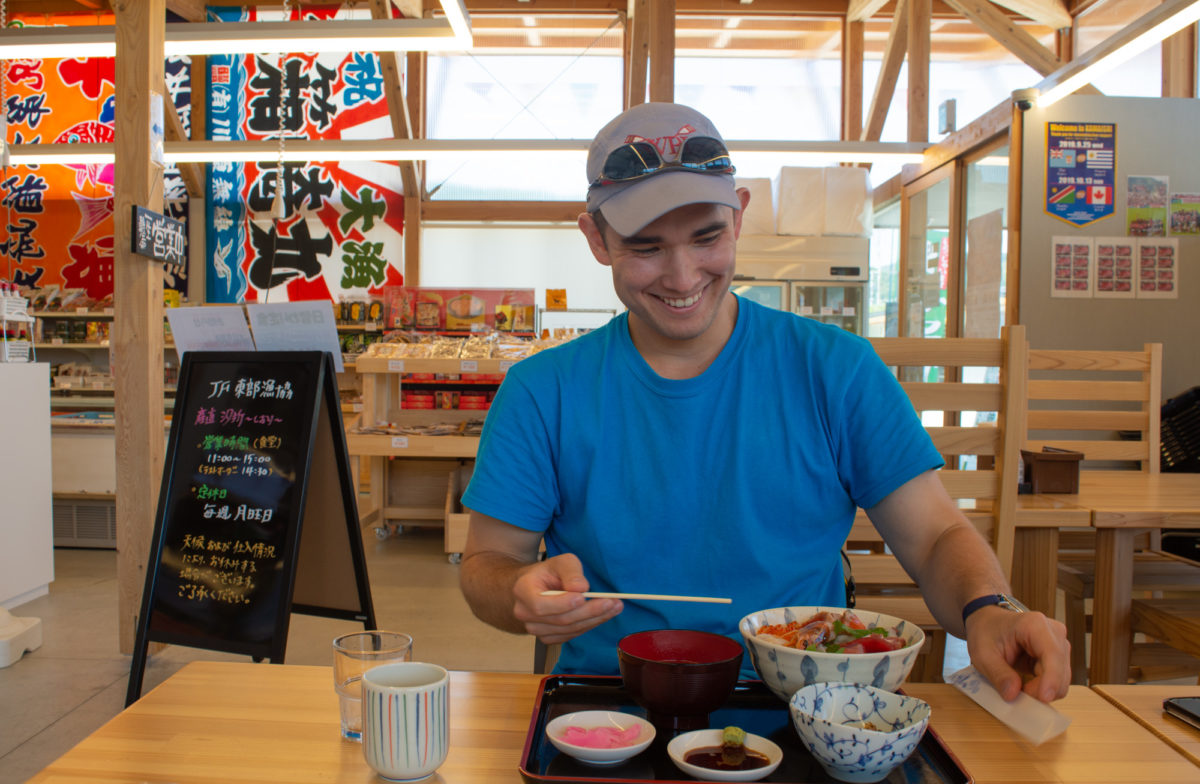
About a 20-minute walk east of the stadium lies tranquil Nebama Beach. We went there for a glamping experience offered by the folks at Wondertrunk & Co. travel company. For now the program is being offered with rugby fans in mind, though in the future they hope to make it available to hikers trekking the nearby Michinoku Coastal Trail as well.
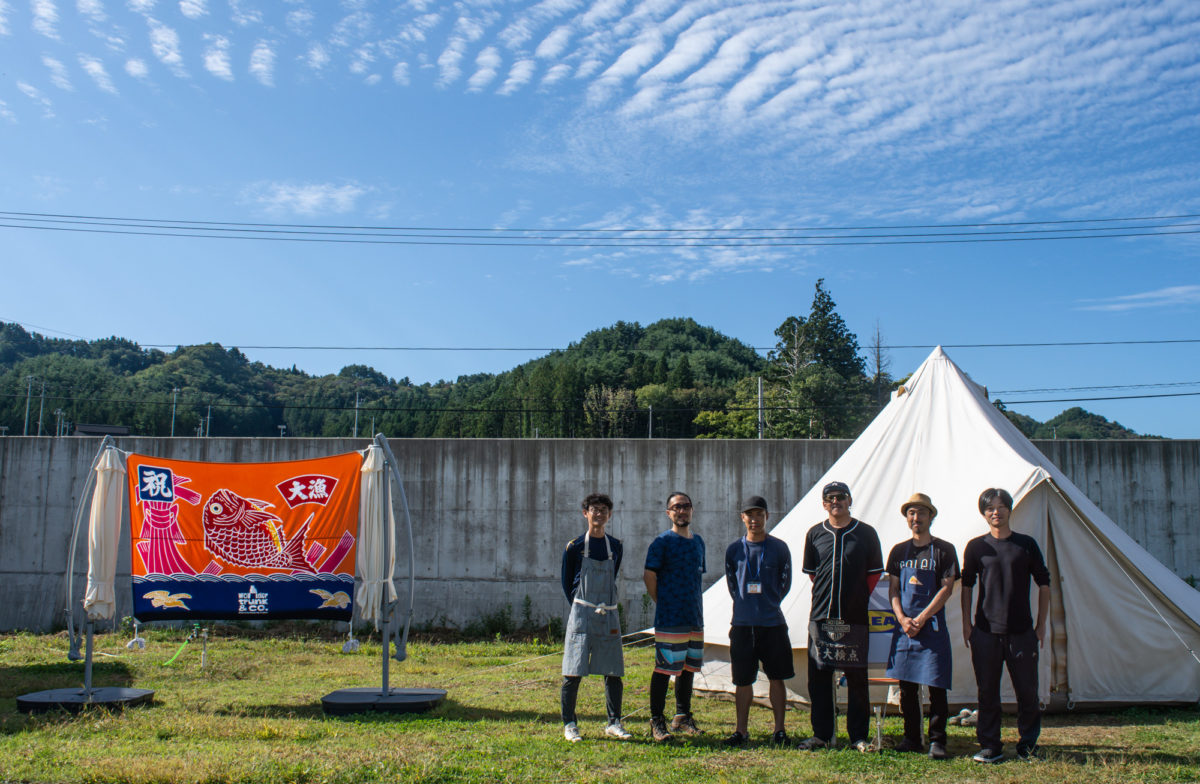
Glamping turned out to be the highlight of our trip. Dinner was served around a cozy communal campfire, where we mingled with other guests. Hideki Takeda, the talented chef at Blue Corn Cafe (ケータリング&カフェ BlUE CORN) in Ofunato, was brought in to do the cooking. The meal was a meat lover’s dream: a main of barbecue short ribs, slow cooked for hours over hot coals, was accompanied by steak, zuwaigani (snow crab), and grilled vegetables.
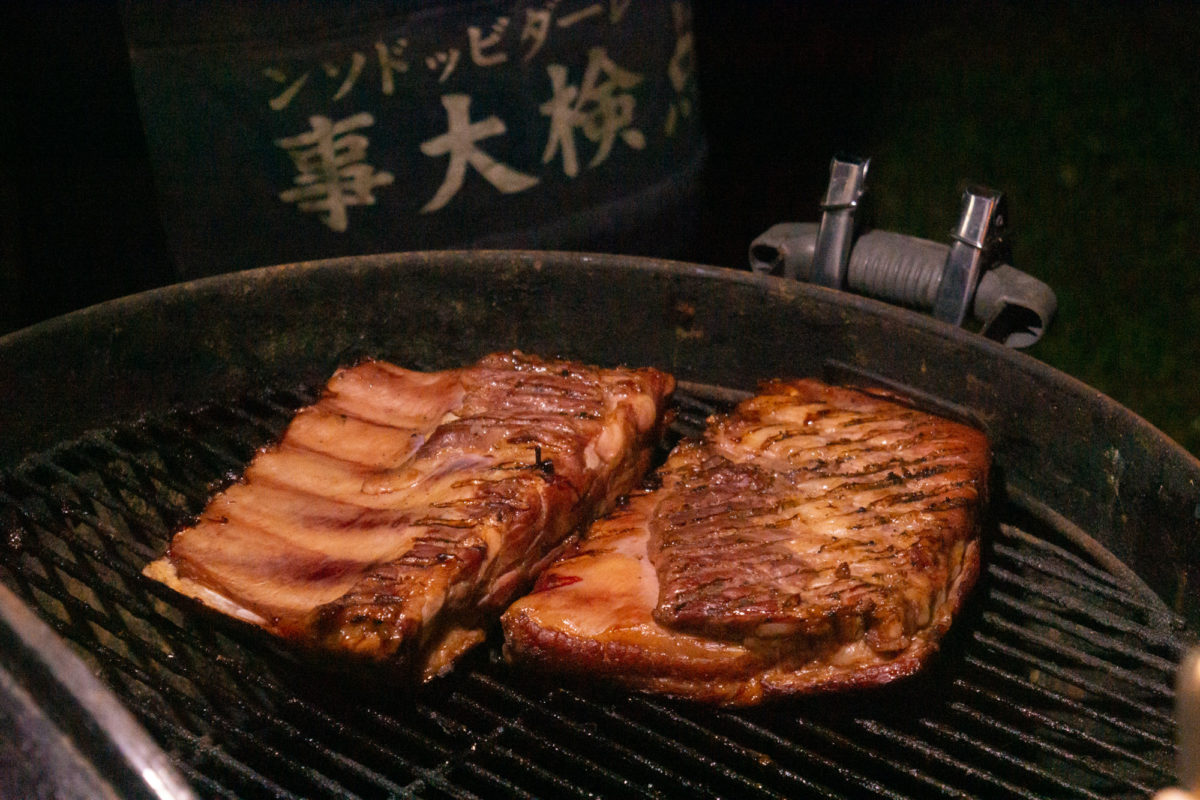
Our “room” was a yurt-like tent set up on a grassy area near the shore. The interior was like a cozy version of a Coachella VIP tent, decked out with plush beds, a sleek beige rocking chair . . . even white fur rugs! Votives were scattered here and there, bathing the space in the warm glow of candlelight (electric though, for safety reasons). We fell asleep to the sound of the waves gently lapping the shore.

Central Kamaishi Sightseeing
In conjunction with the 2019 Rugby World Cup, a Fan Zone has been set up in Central Kamaishi a few minutes’ walk from Kamaishi Station. It’s open to the general public, not just ticketholders. There’s an exhibition hall and an outdoor theater where visitors can watch live broadcasts of Rugby World Cup games. What we enjoyed most was the experience corner where you can try throwing and kicking rugby balls to win prizes. We also had fun with the trick art photo-op where you can pose as if you’re scoring a try in Kamaishi Stadium.
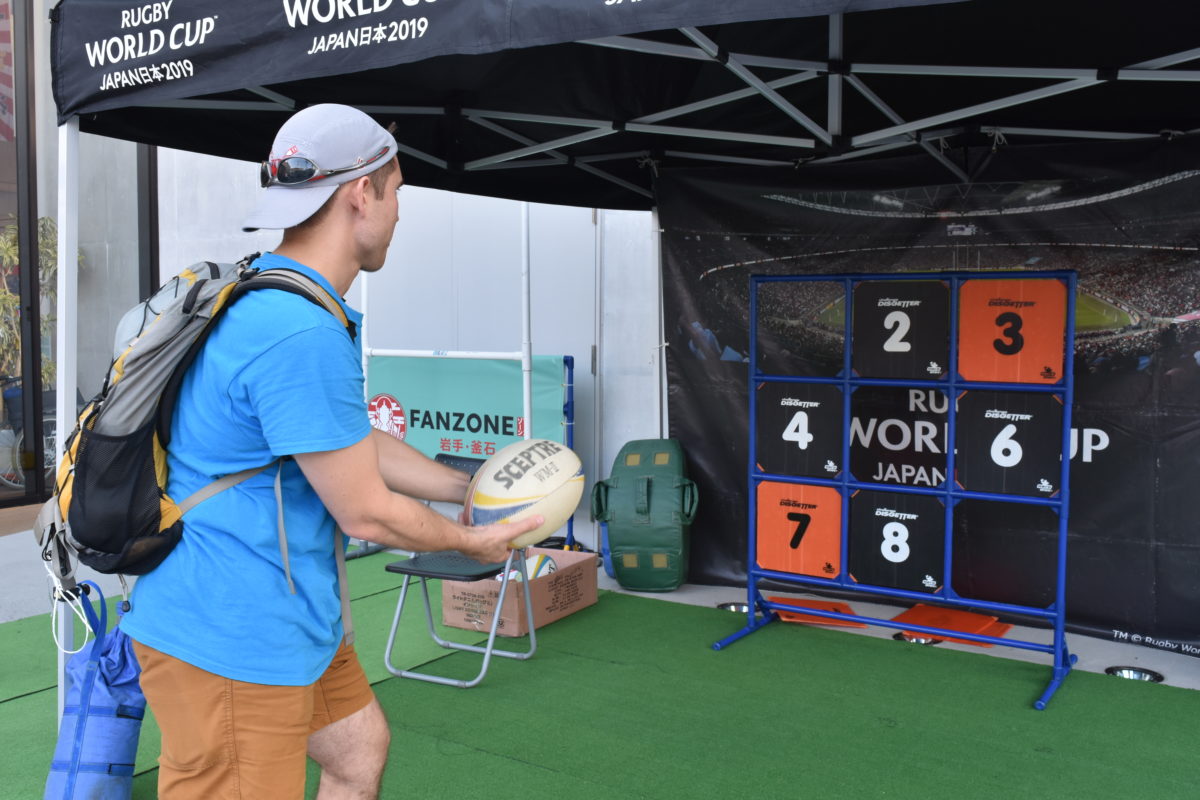
If you want to come to Kamaishi for rugby sightseeing but aren’t able to make it during the Rugby World Cup, the Rugby Cafe Kamaishi (ラグビーカフェ釜石) is a permanent attraction set up next door to Kamaishi Station. It exhibits photos and memorabilia related to Kamaishi rugby, and features the same goofy trick-art photo set as the Fan Zone.
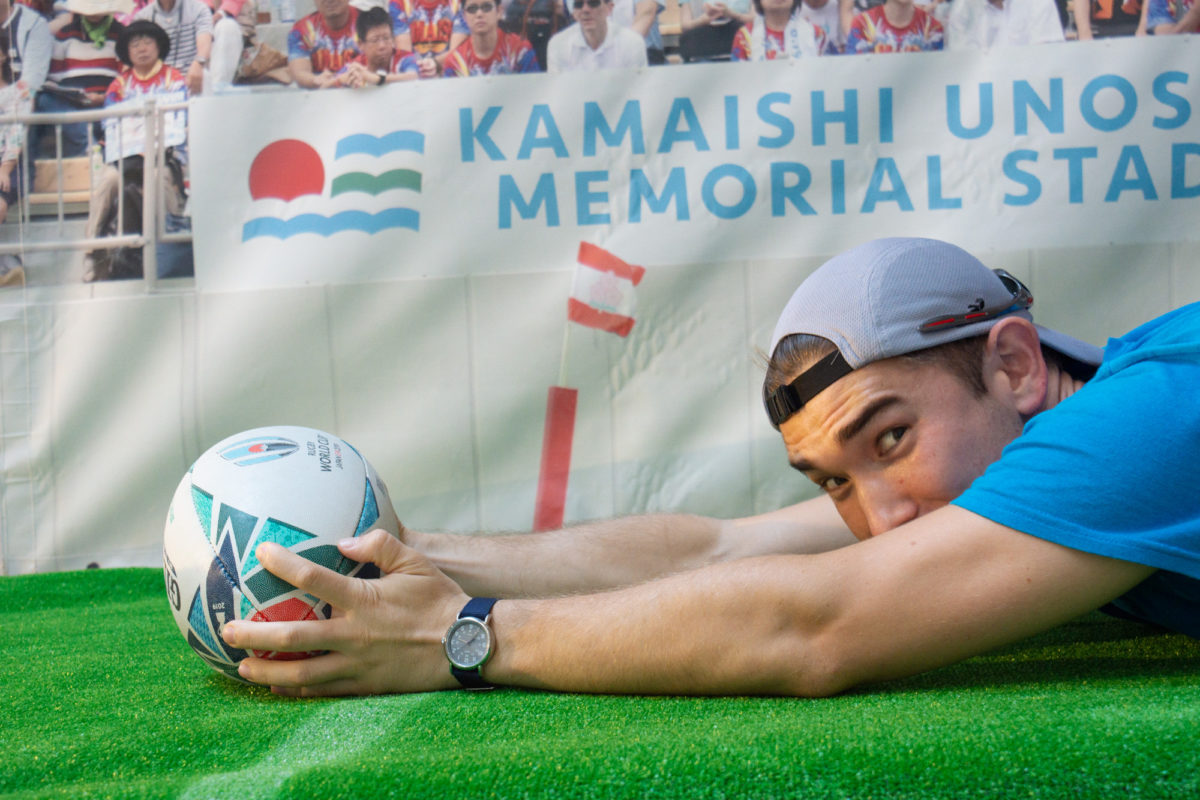
Another limited-time event that coincides with the 2019 Rugby World Cup season is the teamLab Future Park, run by the same people behind the Instagram-sensation teamLab Borderless in Tokyo. The Future Park is a family-friendly, interactive romp through the latest creative tech. One of our favorite exhibits was a rink full of large glowing orbs. The orbs changed color and made choir-like sounds when touched, so by rolling them around we could control the color palette and background music in the rink.
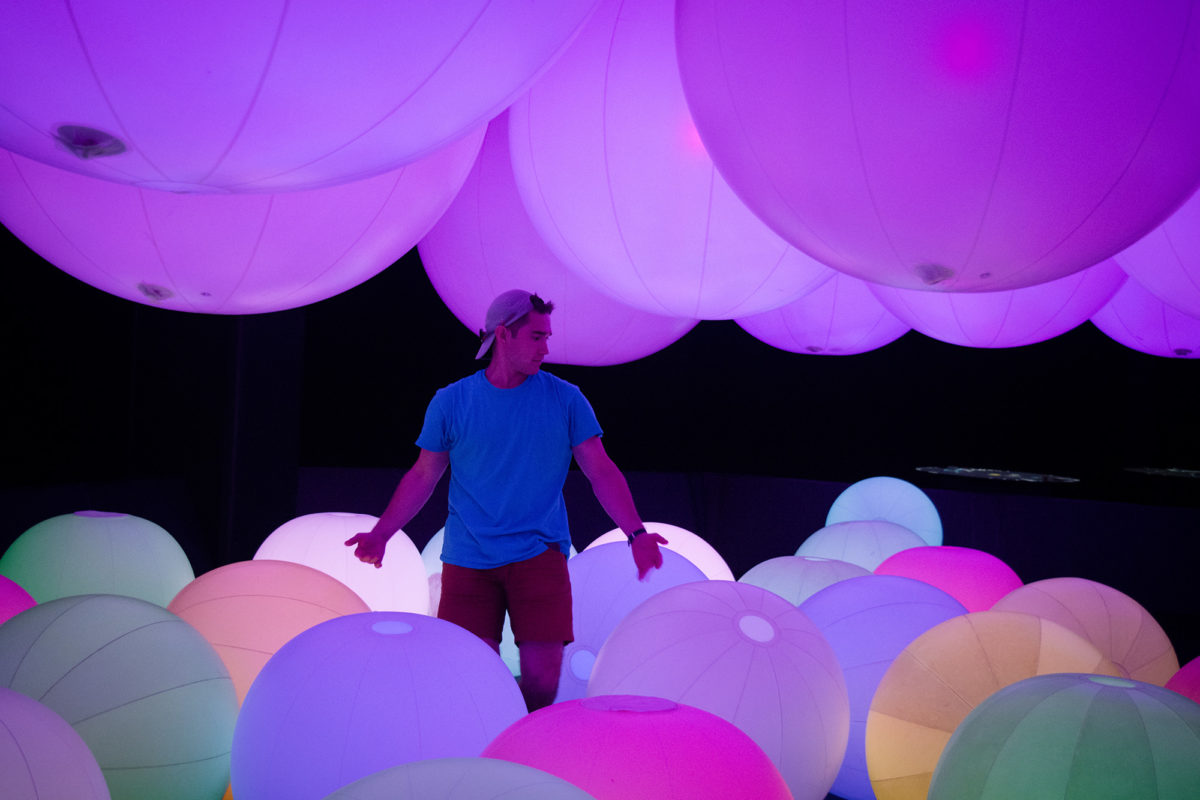
Dining in Central Kamaishi
Central Kamaishi has a concentration of dining establishments almost as dense as Tokyo or Osaka, and plenty of good ones. My favorite place for a meal is Hikari Shokudo (ヒカリ食堂), a popular locavore spot serving Western-style fare made with local Japanese ingredients. For coffee, I like Cafe Kikuyoshi (カフェ キクヨシ), where they serve it brewed from single-origin, house-roasted beans ground fresh for each cup. And my favorite way to spend an evening in Kamaishi? Over a tumbler of Scotch at the Town Hall jazz bar. The owner is a jazz aficionado who plays his vinyl collection over high-fidelity speakers so massive they’ll have audiophiles in rapture.
Even if you’re coming to Kamaishi just to watch one of the Rugby World Cup matches, consider staying in the area for a day or two to enjoy some of these fantastic experiences. The thrill of exploring this bustling off-the-beaten-path city is likely to be one of the highlights of your trip to Japan.
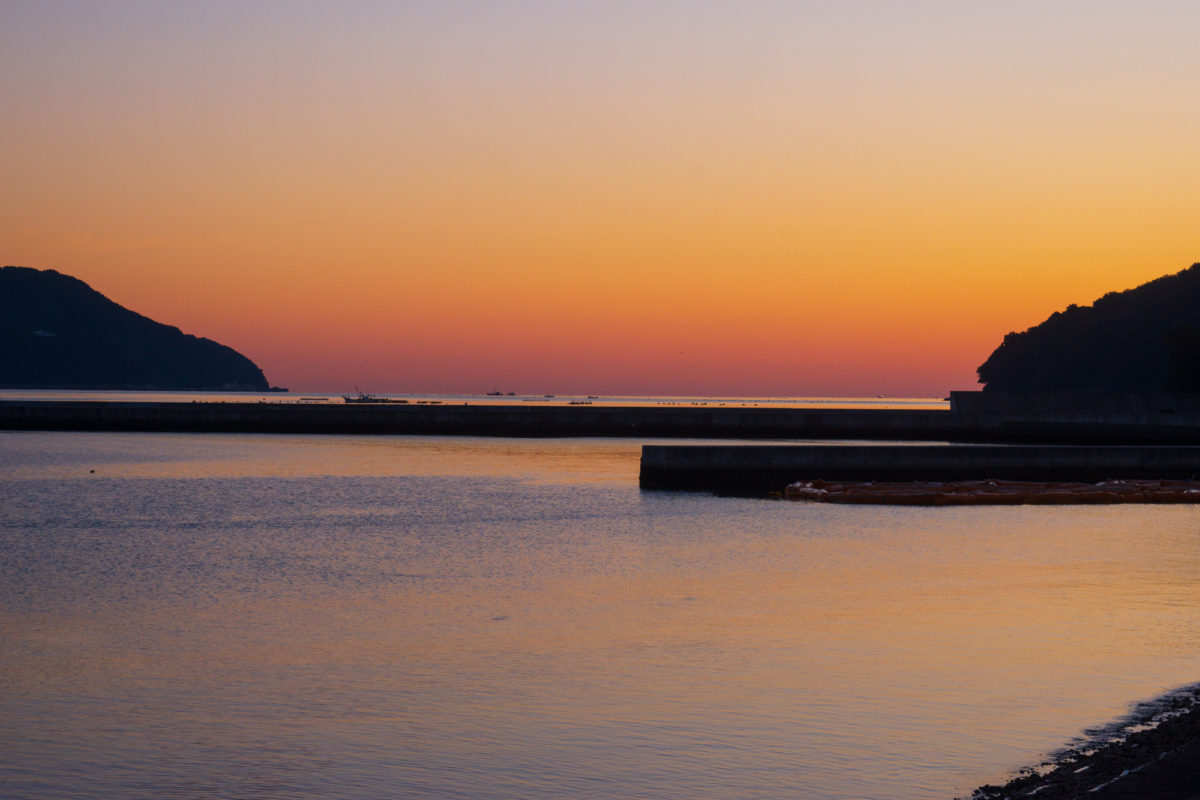
-
Last Update
December 6, 2022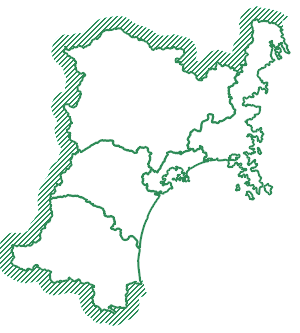
Area Near Miyagi
Details
Visit Miyagi © 2018 All Rights Reserved.